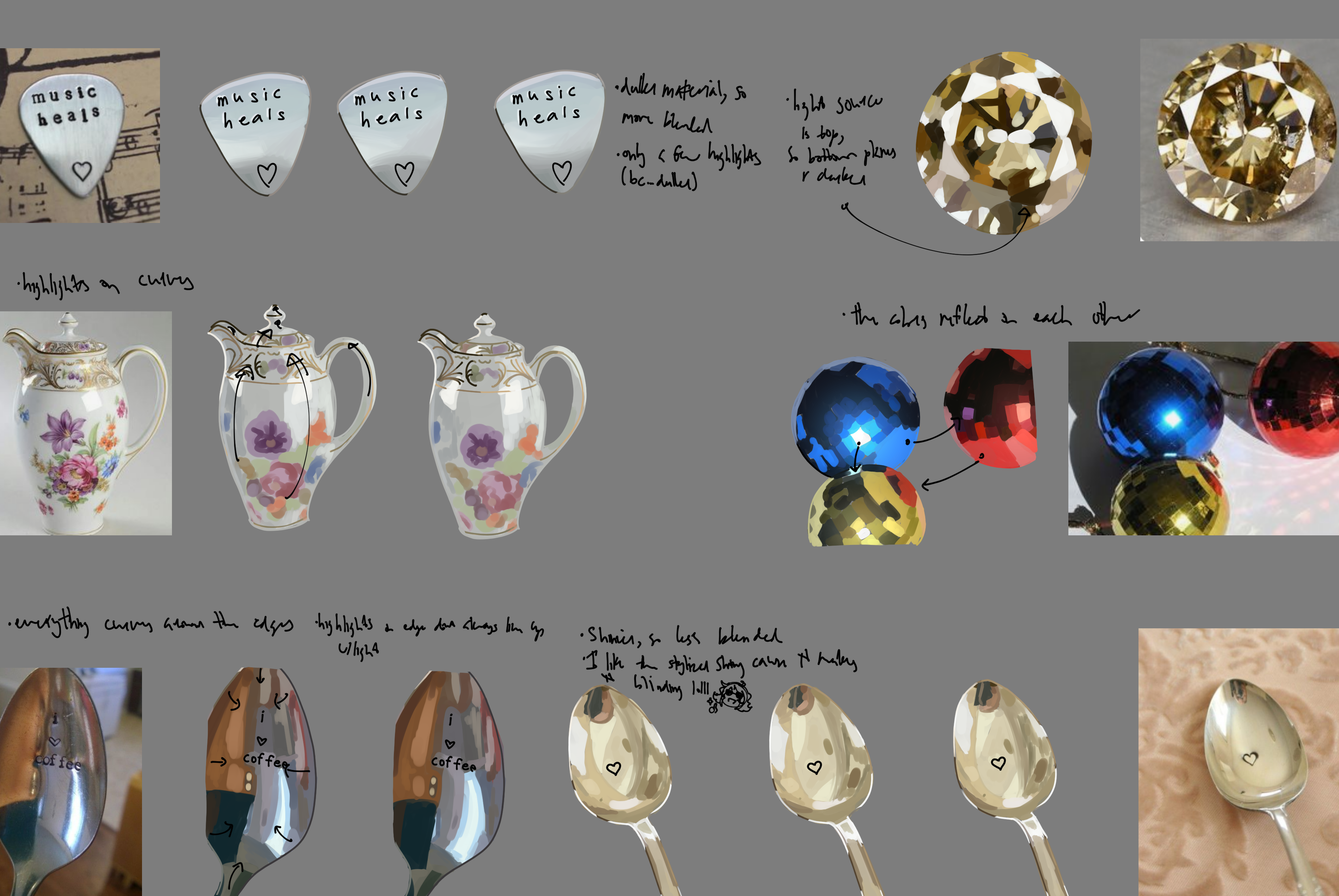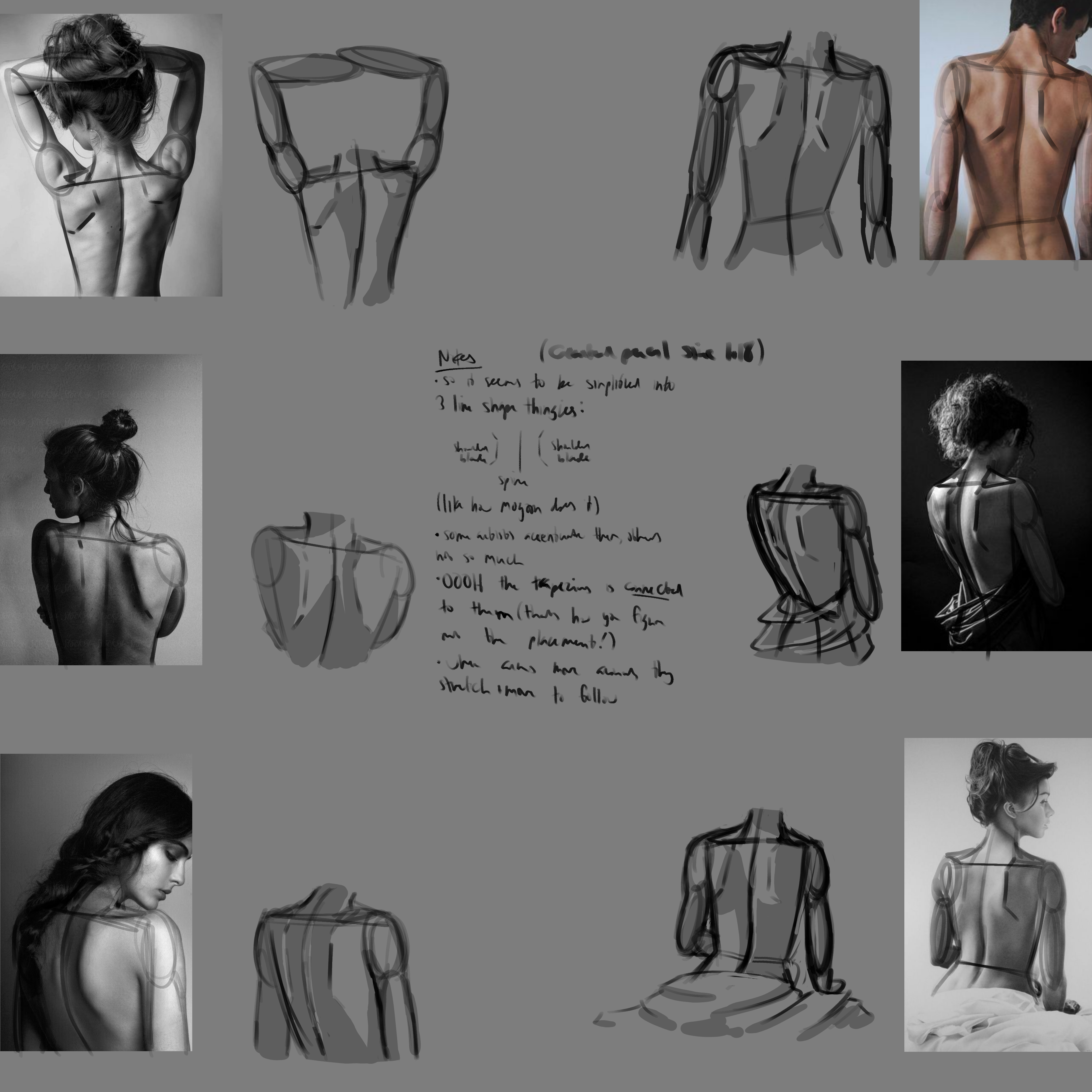| Home | ||||
| Art Mediums | Art Studies | Styles and Style Studies | Tips and Tricks (For Digital Art) | Commissions |
Perhaps the most important thing when learning art is to do studies. Studies will help you learn and retain information, and they can help you track your progress. You can also use them to help you refresh your memory on previous studies.
To begin with, pick the subject you want to study. This can be a wide range of things, from humans to animals, objects, the sky, plants, and much more. Think of what you want to be able to draw. It may help if you do a preliminary drawing testing out what you want to draw. Then you can see what doesn't look or feel right, and pick that to study. Or, you could pick something you haven't drawn before.
However, if you have no previous experience drawing, study shapes and 3D objects first. For example, you can do studies on spheres, cubes, or organic 3D shapes. This will help you to break down objects into simple shapes, which will make it easier to draw.
Anatomy and proportions will be the next thing you want to study. It doesn't have to be anatomy of humans if you don't want to draw that, it could be anatomy of animals, or proportions of plants or objects.
After you have picked your subject to study, the next thing is to look up tutorials on them. Be mindful of which ones you take advice from, however, because some could give wrong information, even if they don't mean to. Watch multiple different videos on the same subject so you have a variety of knowledge to draw from.
The next step is to find references. Use images from sites like Pinterest, Google Images, or use pictures you take yourself. Have these on hand to learn from.
Then get out your paper, canvas, or digital file.
These next steps are less rigid than the last ones. You can conduct a study however you feel you learn best. For example, some may trace over the reference image first, to get a feel for the shapes, then draw their own version. Or some may prefer to start with their own, then check the proportions, so they can correct it in the future.
For example, when I do studies, I first trace the subject, then draw it on my own. For this study, for example, I wanted to learn about reflective surfaces, and how to draw them. I used a simplified style, which is helpful to me since I get to practice it in my style right away. I also included some little notes for myself, to help me rememeber the most important things I learned.

Another study I did that did not involve coloring was a study on backs. Specifically, shoulder blades. I included some of the other back muscles in my study, however, making them hyperrealistic wasn't my goal.

You most likely have a style in mind you want to draw, but for these first studies, it might be more helpful to learn it in a realistic style, in case you ever switch styles.
Tracing is a thing that is frowned upon in most cases in the art community, however, for studies it is highly recommended to trace. This gets your wrist and arm used to the motions, which will help you draw the subjects. Of course, NEVER pass a traced work as your own.
Once you study all the references you found, you've completed your study! Be sure to revisit it if the subject continues to pose issues for you in the future, or if there was something you wanted to come back to.